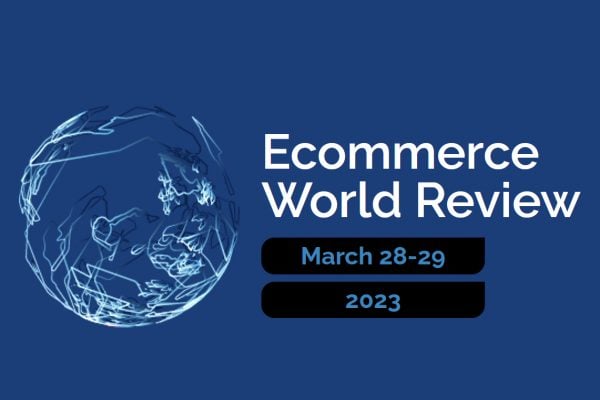A PayPal survey of online shoppers reveals the reasons that buyers abandon their shopping carts. Nearly half blamed too-high shipping costs, whereas – unsurprisingly in a survey commissioned by PayPal – a fifth said that their preferred method of payment wasn’t available and they couldn’t be bothered to go and find a card to pay.
With more and more eBay sellers every day starting up their own websites, it’s essential to get your shopping cart right. Estimates are that two-thirds of shoppers abandon their carts with goods in them but unpaid for; more cheeringly, one third of shoppers may return to complete the transaction later. Here are some things to avoid if you want your customers to have a heavenly checkout experience.
1. Greed : “I’ll charge what I like for postage”
According to PayPal, 43% of abandoned carts are due to shipping charges being too high. 36% of those surveyed said that the total cost was too high, so we might guess that shipping charges played a part in this too. I’m very surprised not to see “no postage fees specified” on PayPal’s list too, because for me, having to go look elsewhere to find what shipping is going to cost me, is my number one reason for abandoning my own carts.
So be upfront about your shipping. If you have a complicated tariff and lots of international customers, consider at least putting in a link to shipping prices from the cart. Better still, show UK shipping by default and allow customers to alter that to their own country, so that they can see as they shop what extras they’re going to be charged.
2. Sloth : “it’ll be delivered when I feel like it”
We all know if you’re buying from the internet, you should allow plenty of time for delivery. We all know that doesn’t happen. Offering next day or other super-quick shipping, with details of how (courier, Special Delivery, etc.) and when (“order in the next 30 minutes for delivery tomorrow”) delivery will take place can clinch you those desperate last-minute orders. Displaying this as part of the shopping cart encourages buyers to check out sooner rather than later.
3. Wrath : “I hate PayPal!”
As merchants, some of us don’t like it, but PayPal’s reach into the ecommerce world grows ever longer and stronger. Your buyers like PayPal: they’ve been sold on the security aspect, but more importantly, they like not having to get off their bottoms and find their credit card. You like that too: PayPal keeps them at the computer, paying you, instead of wandering off and getting distracted. Other shoppers, of course, don’t or won’t have a PayPal account. Offer both PayPal and a direct credit card payment options; that way, you keep everyone happy.
4. Lust : “I want your email address”
Though you might have good reasons for it, don’t force your shoppers to create an account before they can check out. The more steps you introduce into your checkout flow, the more chance your shoppers have to quit. Don’t take them out of that flow to create an account. Worse still, don’t create an account for them, and then require them to remember the details next time they shop: 14% of PayPal’s survey respondants stopped shopping because they couldn’t remember their user names and passwords on the merchant’s site.
5. Gluttony : “my shopping cart ate your shopping”
French clothing site La Redoute is the worst sinner I know here; if you’re not signed into your account, their shopping cart forgets its contents within the hour. When I go shopping, I’m not thinking about signing into my account; I’m thinking about shoes. So have your shopping cart remember what’s put into it. With a third of shoppers returning hours or even days later to complete their purchase, it pays to allow shoppers to leave items in their carts.
6. Envy : “I’ll keep my information to myself”
According to PayPal, 16% of shoppers abandoned their shopping because they couldn’t contact customer support. Be reassuring. Your shopping cart page should have links to FAQs, shipping details (tariffs and details of services used) and most importantly, how to contact you in case of a question: a phone number as well as email contact could make all the difference here.
7. Pride : sometimes, you have to let it go
A couple of wholesalers I use have an annoying new feature on their shopping carts: they email you if you’ve abandoned them. If that isn’t bad enough, I once had a phonecall, from India, “did you know you haven’t paid for what’s in your shopping cart?” Er, yes, and I doubt I will do now. Make it easy for your customers to pay, but for goodness’ sake, don’t try and annoy them into buying.
What have you done with the shopping cart on your website to make sure your customers complete their purchase? Leave us a comment.











9 Responses
My biggest hate is the sloth. I don’t care if your postage isn’t the cheapest but I want to know when my purchase will arrive and the quicker the better even if I have to pay slightly more. Given a chance I always upgrade to the fastest service offered!
Hmm, “biggest hate” is a toughie. I think my two biggest hates from this list are my two favourite sins in real life… I’ll let you lot figure out which they are 😉
You tell me Sue 😉
Agree with most of it but not point 7.
If I see an abandoned cart where the customer has got as far as leaving an email address I send a very polite email asking if all was fine and would they like to continue with the purchase. I have around a 90% take up on this email with customers being surprised and pleased that I was interested in them enough to ask.
Mike
I know that on a lot of smaller sites there is no indication of the shipping costs at all, so that you can only find out by getting through the shopping cart process before you are told what the shipping will be.
So I will abandon these sites either because a) I have to register just to find out the shipping costs or b) I got to find the shipping costs but the total cost was then cheaper elsewhere.
emailing me would have no beneficial effect but then I am a curmudgeonly old soul.
“I know that on a lot of smaller sites there is no indication of the shipping costs at all” and that’s a fatal flaw and one that smallers sites should easily be able to rectify. – Tell buyers up front so that there are no nasty surprises in the shopping cart, it’s not always that you’re not the cheapest merchant, sometimes it’s just “Blimey that much carriage, I’m not paying that” whereas if they knew up front they’d accept it having already factored it in.
yep agree totally with all the reason above
nothing worse than having to go through pages of account sign ups and password & user names pages just to find the shipping charge extortionate.
then a week later when the goods arrive you have to log in to get a vat reciept, by then of course you have forgot the username.
on my site i made sure that everything was clear and simple with no accounts, no spamming and shipping charges shown everytime products are added.
hardly any abandoned now.
I remember one site I was planning to buy from actually went as far as requiring you to enter credit card details before getting a total including shipping :o. Needless to say I didn’t go any further.
I meant to mention this in the post but forgot, Steve just reminded me: I was recently investigating how you get the flag that turns the browser bar green to prove you’re not a phishing site. A veri large internet corporation are one of those who offer this. I wanted a price. In order to get a price, I not only had to sign up for an account, I had to hand over my telephone number… turns out it’s not possible to “want to know the price”, you must “want to purchase”, which means their sales people phone you and phone you and phone you. Sadly I lost my ability to speak French, then I lost my ability to answer the phone at all…. 🙄